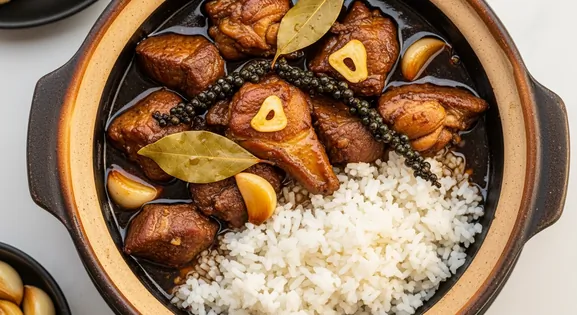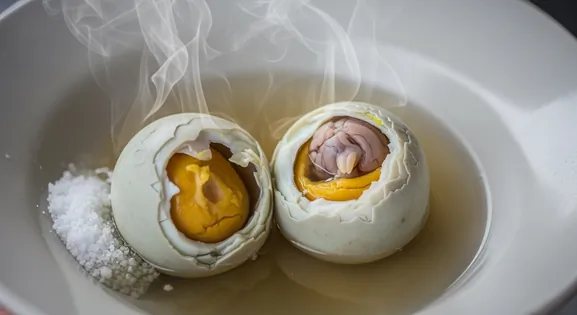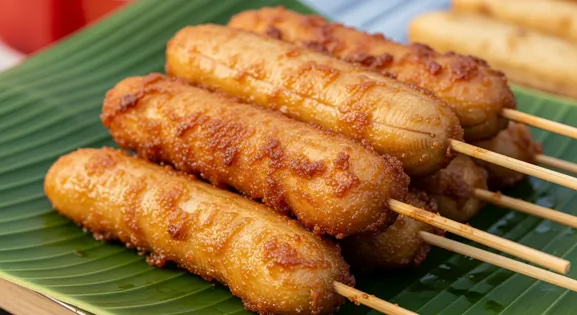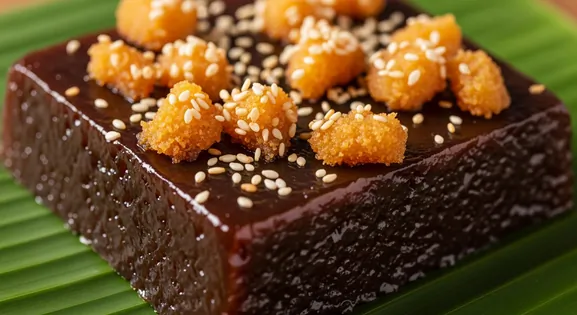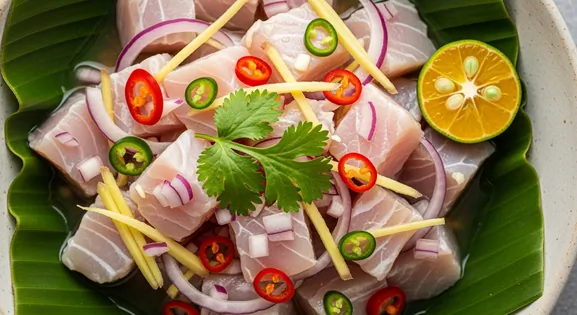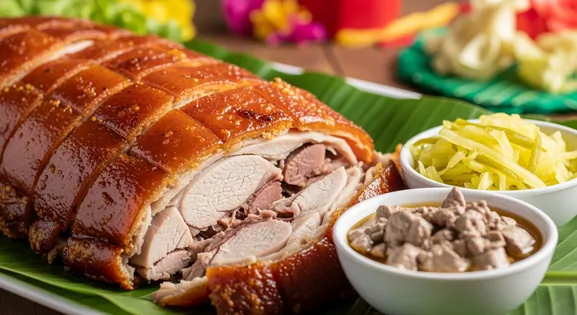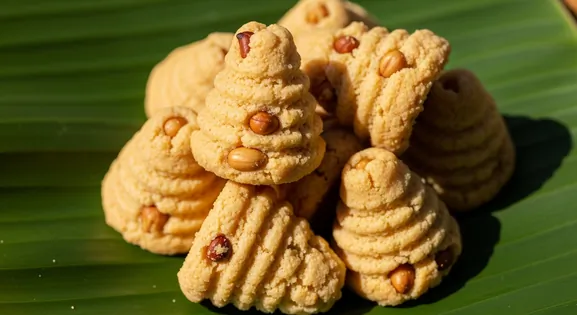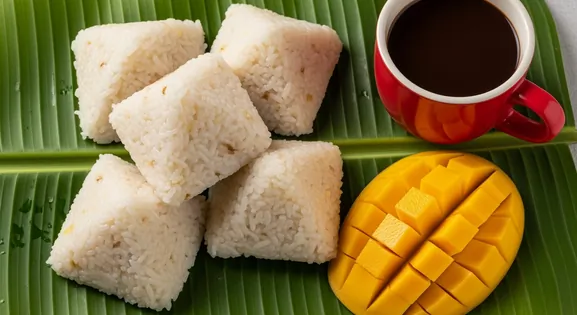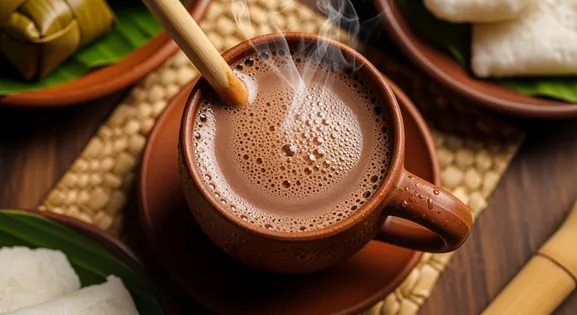Lumpia in Philippines: A Complete Food Lover's Guide
Lumpia
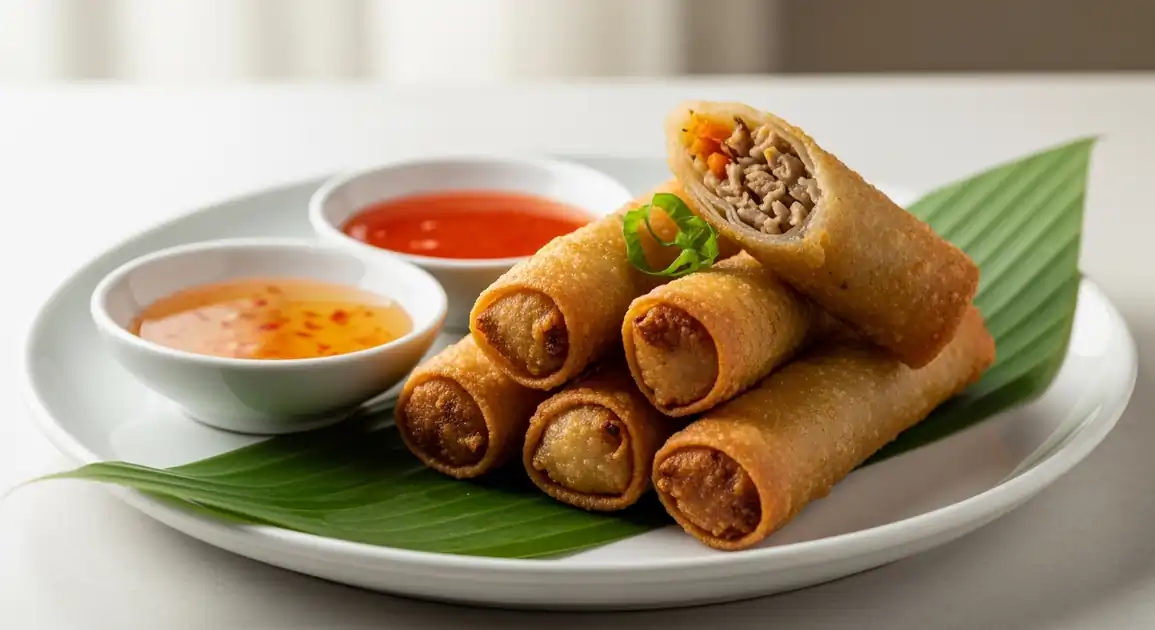
What is Lumpia (Filipino Spring Rolls)?
Lumpia is the beloved Filipino version of a spring roll, celebrated for its crispy, golden-brown wrapper encasing a savory filling. Typically enjoyed as a snack ('merienda') or appetizer, authentic lumpia comes in various forms, most notably the meat-filled Lumpiang Shanghai and the vegetable-based Lumpiang Gulay. This crispy Filipino spring roll is a staple in local cuisine.
The Art of Preparation
Preparation involves sautéing the filling ingredients (like ground pork, minced onions, carrots for Shanghai; or cabbage, bean sprouts for Gulay) until cooked. This filling is then carefully rolled in thin, spring roll wrappers ('balat'). For fried versions, the rolls are deep-fried in hot oil (around 180°C/350°F) until golden brown and perfectly crisp. Achieving the signature crispiness requires hot oil and avoiding overcrowding the fryer.
Key Ingredients of Lumpia (Filipino Spring Rolls)
Lumpia Wrapper (Balat)
These thin, delicate wrappers, typically made from wheat flour, are the defining characteristic of lumpia. They become incredibly crispy when fried, providing the signature crunch.
Quality indicator: Look for fresh, pliable wrappers without tears or dry edges. For fried lumpia, they should be thin enough to crisp up quickly.
Ground Meat (Giniling)
For Lumpiang Shanghai, seasoned ground pork or a mix of pork and beef is the primary filling. It provides a rich, savory base that complements the crispy wrapper.
Quality indicator: Quality ground meat should be fresh, lean, and finely minced for a smooth filling texture.
Mixed Vegetables (Gulay)
For Lumpiang Gulay and other variations, common vegetables include shredded cabbage, carrots, bean sprouts ('toge'), and green beans. They add freshness, texture, and nutritional value.
Quality indicator: Vegetables should be fresh, crisp, and vibrant in color, indicating proper handling and quality.
What to Serve with This Dish
Sweet Chili Sauce
sauce
A popular accompaniment for fried lumpia, offering a balance of sweetness, tang, and a mild spicy kick that cuts through the richness of the fried wrapper.
Spiced Vinegar (Suka)
condiment
A traditional Filipino dipping sauce made from vinegar infused with garlic, onions, and chili. Its sharp, sour, and spicy notes provide a refreshing contrast to the savory lumpia.
From Humble Origins: A Brief History
Lumpia traces its origins to Chinese spring rolls, specifically "lunpia" or "popiah," which were introduced to the Philippines by Hokkien traders and immigrants centuries ago. Over time, Filipinos adapted the dish, incorporating indigenous ingredients and culinary techniques, transforming it into a distinct and beloved part of their national cuisine. It has become deeply ingrained in Filipino culture, evolving from a simple snack to an essential dish at every significant gathering—from festive fiestas and family celebrations to everyday meals—symbolizing hospitality, communal joy, and the rich tapestry of Filipino culinary heritage.
Local Lumpia (Filipino Spring Rolls) Variations in Philippines
Lumpiang Shanghai
Thin, fried spring rolls filled with seasoned ground meat (usually pork), minced vegetables like onions and carrots. Known for its crispiness.
Lumpiang Gulay
Fried spring rolls filled primarily with vegetables such as cabbage, carrots, bean sprouts ('toge'), sweet potato. Often thicker than Shanghai.
Lumpiang Sariwa
Fresh (unfried) spring roll with a soft, crepe-like wrapper. Filled with cooked vegetables (like heart of palm 'ubod', carrots, jicama), lettuce, and sometimes meat/shrimp. Served with a sweet, thick peanut-garlic sauce.
Lumpiang Hubad
'Naked' fresh lumpia. The filling of Lumpiang Sariwa served without the wrapper, topped with the characteristic sweet sauce and crushed peanuts.
Dynamite Lumpia (Dinamita)
A long green chili pepper ('siling haba') stuffed with ground meat and/or cheese, wrapped in a lumpia wrapper, and deep-fried. Looks like a stick of dynamite.
Universal Quality Indicators
What to Look For
-
Vendor fries lumpia fresh to order or in small, continuous batches.
Ensures the lumpia is hot, maximally crispy, and hasn't been sitting around, promoting optimal quality and freshness.
-
Hot, reasonably clean frying oil.
Hot oil ensures quick cooking and a crispy, less greasy result. Avoid vendors using very dark, dirty, or low-temperature oil.
-
Crispy, golden-brown appearance.
Indicates proper frying. Avoid lumpia that looks pale, soggy, or overly dark/burnt.
-
Clean vendor station and utensils.
Good general hygiene practices are essential for maintaining food quality. Check how ingredients and money are handled.
-
High customer turnover.
A busy stall suggests the lumpia is popular and likely freshly made.
What to avoid
-
Pre-fried lumpia sitting in a large pile for extended periods.
Lumpia cools quickly and loses crispiness. Stored at improper temperatures, it can compromise the quality and freshness of the food.
-
Very dark, sludgy, or smoking oil.
Indicates old oil which affects taste and may contain harmful compounds. Smoking oil means it's too hot or degraded.
-
Soggy, oily, or limp lumpia.
Suggests improper frying temperature (too low), old lumpia, or excessive oil absorption.
-
Visible cross-contamination (e.g., handling money then food without washing).
Poor hygiene can compromise the quality and cleanliness of the food.
-
Unusually cheap lumpia compared to surrounding vendors.
Could potentially indicate use of lower quality ingredients or very old oil to cut costs.
Explore Lumpia (Filipino Spring Rolls) in Detail: City Guides
Discover where to find the best Lumpia (Filipino Spring Rolls) and learn local tips in these cities:
Dietary Information
Dietary Information
Important Note for Travelers: Your safety is our priority. Below are the common allergens associated with the traditional preparation of this dish. However, recipes and ingredients can vary significantly between establishments. Always confirm all ingredients directly with the food vendor before ordering, especially if you have a severe allergy.
Potential Allergens
Dietary Suitability
How to Order Lumpia (Filipino Spring Rolls)
Frequently Asked Questions about Lumpia (Filipino Spring Rolls)
What is Lumpia?
Lumpia refers to Filipino spring rolls, inspired by Chinese versions. They typically consist of a thin wrapper ('balat') filled with savory ingredients, which is then often deep-fried until crispy. Common types include meat-filled 'Lumpiang Shanghai' and vegetable-filled 'Lumpiang Gulay'. Fresh, unfried versions ('Lumpiang Sariwa') also exist.
What are the main types of Lumpia?
The most common types are: 1) Lumpiang Shanghai (thin, fried, filled with ground meat, usually pork, and minced vegetables), 2) Lumpiang Gulay (fried, filled primarily with vegetables like cabbage, carrots, sweet potato), and 3) Lumpiang Sariwa (fresh/unfried, soft wrapper, filled with cooked vegetables and sometimes shrimp/pork, served with a sweet peanut-garlic sauce).
Is street vendor Lumpia safe to eat?
Fried lumpia bought from street vendors is generally safe if it's freshly fried in front of you. Choose vendors with clean carts, hot and relatively clean-looking oil, and high customer turnover. Avoid lumpia that has been sitting out for a long time, looks soggy, or is fried in very dark oil.
Is Lumpia vegetarian or vegan?
Lumpiang Shanghai contains meat. Lumpiang Gulay can be vegetarian if only vegetables are used, but confirm no meat/shrimp are added. Lumpiang Sariwa often contains shrimp or pork. For vegan options, ensure no meat/shrimp/egg in filling and verify wrapper ingredients (some use egg). Strict vegan versions require specific preparation.
Is Lumpia gluten-free?
No, traditional lumpia wrappers are made from wheat flour and are not gluten-free. Lumpiang Hubad ('naked' fresh lumpia) is the filling served without a wrapper and might be gluten-free depending on the sauce and ingredients, but cross-contamination is possible.
What sauces are served with Lumpia?
Fried lumpia (Shanghai, Gulay) is commonly served with either a sweet chili sauce or a spiced vinegar dip (vinegar with garlic, onions, chili, black pepper). Lumpiang Sariwa (fresh lumpia) is traditionally served with a sweet, thick, brown sauce made from stock, soy sauce, garlic, and often peanuts.
Expert How-To Guides about Lumpia (Filipino Spring Rolls)
How to Spot Freshly Made Lumpia
Ensure you get the crispiest and highest quality lumpia by checking these signs.
- Look for vendors actively frying lumpia to order or in small, frequent batches.
- Check the frying oil: It should be hot (bubbling) and relatively light in color. Avoid very dark, sludgy, or smoking oil.
- Observe turnover: A busy stall usually means fresher lumpia.
- Examine the uncooked lumpia (if visible): Wrappers should look pliable, not dry, cracked, or discolored.
- The final product should be golden brown and audibly crisp, not pale or soggy.
Choosing Your Lumpia Dipping Sauce
Enhance your lumpia experience by understanding the common dipping sauces offered. Each provides a unique flavor profile to complement the crispy rolls.
- Sweet Chili Sauce: The most common option, providing a balance of sweetness and a mild spicy kick that cuts through the richness of the fried wrapper. Often commercially bottled.
- Spiced Vinegar ('Suka'): A traditional Filipino dip. White vinegar infused with crushed garlic, chopped onions, chili ('siling labuyo'), and black peppercorns. Offers a sharp, tangy contrast.
- Banana Ketchup: Sometimes offered as an alternative, particularly for kids. Sweet and tangy, it provides a familiar flavor.
- Ask the vendor: They will usually offer the standard options available ('Ano po ang sawsawan?').
Eating Lumpia with Confidence
Follow these simple tips to confidently enjoy lumpia and make smart choices, ensuring a delightful and worry-free culinary experience.
- Prioritize freshly fried: Choose vendors who cook it upon order.
- Ensure it's served hot: Proper temperature helps maintain food quality.
- Observe vendor hygiene: Look for clean hands/utensils and a tidy stall.
- Be aware of fillings: If trying less common types, confirm ingredients if you have allergies (especially shellfish, peanuts, pork).
- Trust your senses: If it smells or looks off, avoid it.
Our Commitment to Quality
At Tasteplorers, our mission is to provide the most accurate and useful travel information in the world. To achieve this, all content on this site is created through our unique editorial framework. We utilize leading AI research tools, guided by our proprietary prompts, and a multi-stage validation process. This entire system is overseen by our editorial team to ensure everything we publish meets our high standards for accuracy, cultural nuance, and practical value for travelers.
Learn more about our Editorial Process and our Mission.
Countries
Explore regions
Europe
Discover Europe's diverse culinary landscape, from Mediterranean flavors to hearty Alpine fare. Learn to navigate markets, decode menus, and eat like a local.
Latin America & Caribbean
Discover the vibrant cuisines of Latin America & the Caribbean. Our expert guide covers everything from Mexican street food to Peruvian ceviche and market tips.
Oceania
Explore Oceania's diverse food scene. Learn about Polynesian earth ovens, Fijian feasts, and the vibrant café culture of Australia and New Zealand.
Southeast Asia
Explore Southeast Asia's diverse food cultures from Thailand to Vietnam. Get expert tips on navigating spice levels, choosing quality vendors, and understanding the rich traditions of the region.
